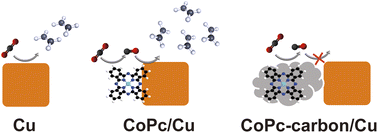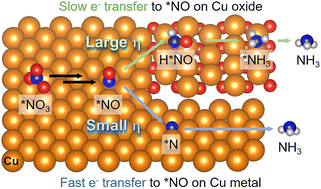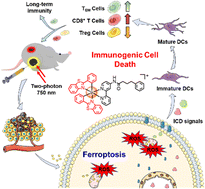Publishing practices you can rely on
Open access research benefits everyone around the planet. It makes research more widely accessible, which can lead to positive change in many areas of daily life. As a diamond open access journal, Chemical Science makes this form of publishing an easy option. We cover all publication costs, so our community can read and publish with us for free.
We are real advocates for open access, and in this blog post, we will explain how it can improve research culture and benefit every single one of us. Interested in learning more? Explore our research or submit your article today.
Discover what you could achieve with open access
Greater impact for you
As a researcher, you will find that the biggest benefit of publishing open access is increasing the discoverability of your work. The number of potential readers of your publications increases significantly with open access. If anyone can access your research – including other scientists, funders, policymakers and the general public – then it is more likely to be cited and make an impact.
Every article we publish is diamond open access, but we don’t only rely on our publications being available to all to make an impact. We celebrate our community, offering promotional opportunities like #ChemSciVoices where our authors can discuss their research in a video or blog post. When you publish with us, you can trust that your research will find the communities it needs to.
Better research culture for all
The benefits of open access for individual researchers are clear – but how can it improve research culture too? Open access helps make sure that publications are visible, reliable and reproducible. Ensuring research findings are available to everyone, in any part of the world is the key to building a fairer, more equitable society – one where everyone can access and benefit from discoveries. Open access can also encourage greater multi-disciplinary collaboration, as scientists in all disciplines and subjects can access and inspire each other, so driving scientific progress faster. Chemical Science harnesses these benefits of open access for everyone, by publishing leading-edge articles that have undergone rigorous peer review, at no cost to the author.
What makes Chemical Science different?
Our diamond open access policy sets us apart from other journals. This policy means that our community can read our articles and publish with us for free. We cover all of the publication costs, so everyone can choose an open access path for their research. And this is only a possibility because we are a society publisher with a mission to disseminate scientific knowledge.
Fair and rigorous peer review
We see open access as part of a larger vision to improve research culture. It’s not enough to increase the accessibility of articles – we need to make sure that our publications are reliable and reproducible too. Providing a robust peer review process is one way we make sure our publications are reliable. In every submission, our peer reviewers are looking for novel ideas, progressive thinking and research that can make a real-world difference. This approach means that Chemical Science is a home to both accessible and impactful work.
The choice of transparent peer review
We are continually looking for ways in which we can increase the quality of our peer-review. For this reason, we now offer our authors the choice of transparent peer review, which aims to cultivate a more open and robust peer-review process. If an author chooses this option, the peer reviewers’ reports, authors’ responses and editors’ decision letters are published alongside the accepted article. Transparent peer review can:
- encourage fair and rigorous peer review
- amplify the hard work of our editors and reviewers
- allow scientists to learn from the published reports
- promote more constructive reviewer comments
Transparent peer review is compatible with both single- and double-anonymised peer review. And if you are a reviewer, you will stay anonymous during the process by default. As an author, you can opt in for transparent peer review at any stage before publication.
FAIR publications
Reproducibility is a key part of the open access picture for Chemical Science. We encourage our authors to make sure that the data in publications is FAIR (Findable, Accessible, Interoperable and Reusable), and we also ask authors to provide a data availability statement in their article. This can improve research culture by:
- supporting the validity of data and maintaining research reproducibility
- increasing transparency and encouraging trust in the scientific process
- enabling and encouraging the reuse of new findings
- giving authors credit through the formal citation of data
Author Contributions
We also ask all authors to provide an Author Contribution Statement as part of their article as standard. Author contribution statements are important as they can:
- provide transparency about who contributed to the research and in what capacity. It allows readers to understand the specific roles of each author in the study, which can be helpful for assessing the validity and reliability of the research findings.
- promote inclusion and diversity by acknowledging the different types of contributions made by each author.
- ensure that all authors are given credit for their work, and that those who did not contribute significantly are not listed as authors.
Start your journey
We are ready when you are. Explore some of these resources to get started with confidence and inspire a global audience.





























































![[double bond, length as m-dash]](https://www.rsc.org/images/entities/char_e001.gif) C isomers
C isomers![Graphical abstract: High-throughput single-cell mass spectrometry enables metabolic network analysis by resolving phospholipid C [[double bond, length as m-dash]] C isomers](https://pubs.rsc.org/en/Image/Get?imageInfo.ImageType=GA&imageInfo.ImageIdentifier.ManuscriptID=D3SC06573A&imageInfo.ImageIdentifier.Year=2024)






